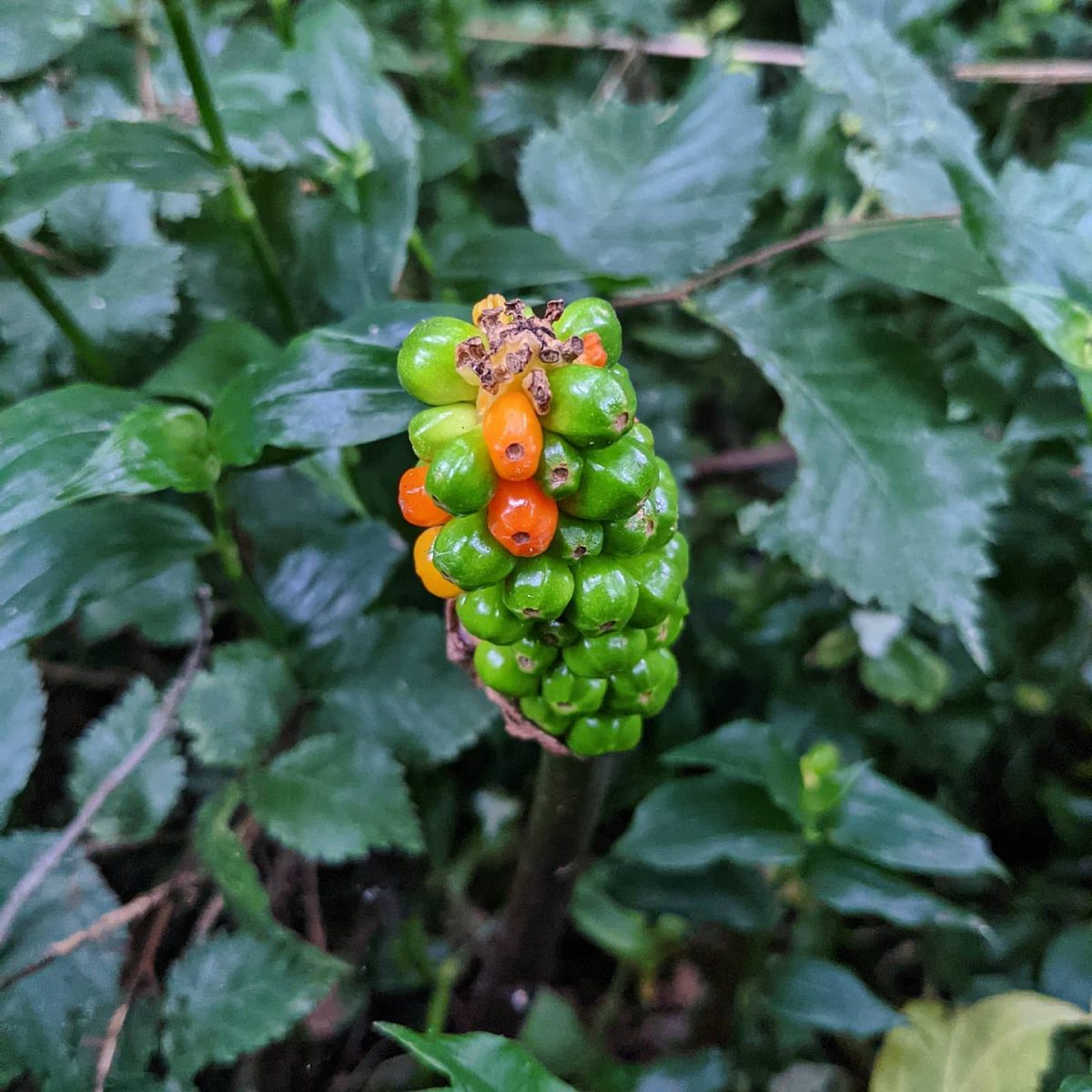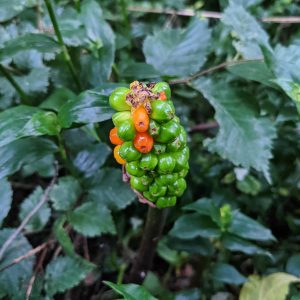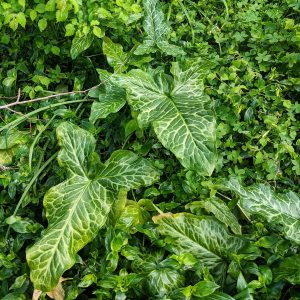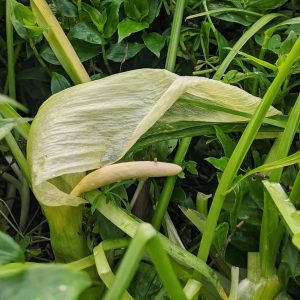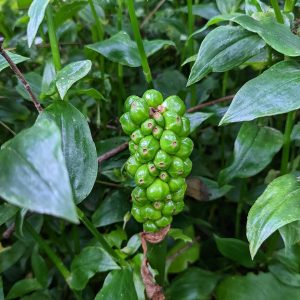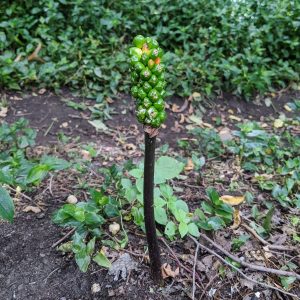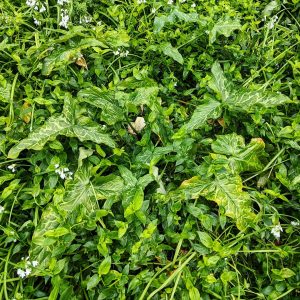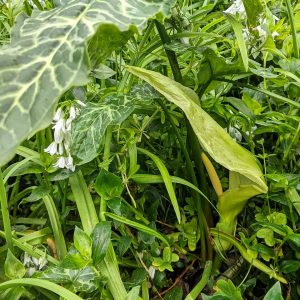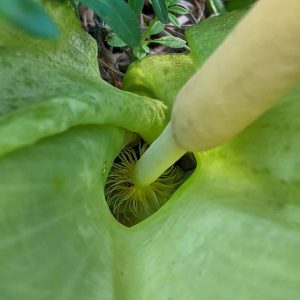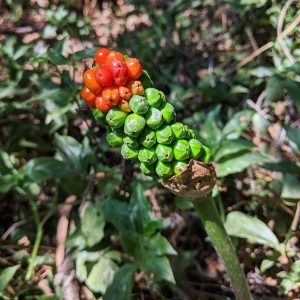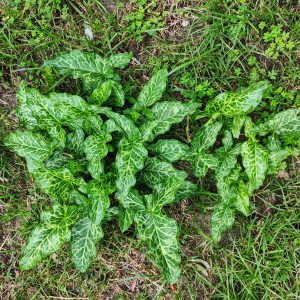Italian Arum Lily (Arum italicum), known to past generations as the ‘Cuckoo-pint’, a green-flowering Mediterranean bulb of deep shade, and minor relative of the ubiquitous White Arum Lily (Zantedeschia aethiopica).
Available from nursery sellers at Melbourne from the 1860s at latest, Italian Arum presents as a perfectly Victorian plant, with its strikingly mottled winter foliage and enduring pillars of warning-hued berries. It is also a plant that has this endearing description: ‘INFLORESCENCE smelling strongly of stale urine or occasionally reminiscent of pineapple…’ I mean, what can I say other than please subscribe me to your catalogue!
A long-time denizen of England’s hedgerows, in ornamental use, Italian Arum was often co-located with Hostas, Amaryllis or other seasonal vegetation in order to provide year-long interest in shade beds. As an environmental weed, Italian Arum does something similar, in that you find it co-locating in valleys with smothering plants, particularly those like Angled Onion and Tradescantia whose growth cycle and habit allow the Arum leaves to ride above the dense ground layer for a time. Then, when in danger of being overtaken, the Arum leaves melt away, leaving only these spikes of first green and then bright red fruits, hovering amidst the summer swell of weedy understorey.
In Victoria, the first collection of naturalised plants was made in a gully at Lakes Entrance in 1944. In the 1990s, it was picked up again around the bottom of the Snowy River near Orbost, as well as at Baw Baw, at the bottom of the Curdies River, and in the lower Merri Creek around the Heidelberg Road bridge, a population which apparently remains extant and is pictured here (a short distance north-west of the bridge). While the plant is frost-hardy, it so far remains a weed principally of near coastal waterways in SE Australia and Tasmania.
View Original Post on Instagram
Search for information about Arum italicum in the Flora of Victoria
View information and occurrences of Arum italicum on the Atlas of Living Australia
